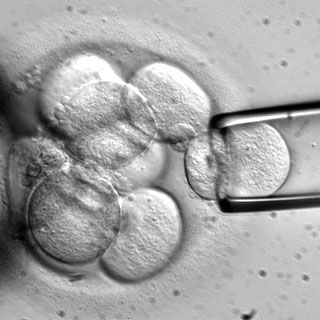Article
‘Brain in a Dish' Yields Schizophrenia Clues
Author(s):
Taking human pluripotent stem cells, reprogramming them to act like embryonic stem cells, and then getting those cells to create neurons has enabled researchers to create a "brain in a dish." In a dramatic demonstration of this technique's potential in neurological research, scientists recently took some of these neurons and reprogrammed them by using genetic material in skin cells taken from people with schizophrenia.

Taking human pluripotent stem cells, reprogramming them to act like embryonic stem cells, and then getting those cells to create neurons has enabled researchers to create a “brain in a dish.”
In a dramatic demonstration of this technique’s potential in neurological research, scientists recently took some of these neurons and reprogrammed them by using genetic material in skin cells taken from people with schizophrenia.
Those newly created schizophrenic neurons started secreting three brain chemicals associated with a range of psychiatric disorders. Compared to a control set of lab-grown healthy neurons, the levels of these neurochemicals—the catecholamine neurotransmitters dopamine, norepinephrine, and epinephrine—were significantly higher than in the cells derived from healthy people.
The research was done at the Skaggs, the Salk Institute for Biological Studies in La Jolla, CA, and the Icahn School of Medicine at Mount Sinai in New York, NY. It was reported online Sept. 11 in Stem Cell Reports and on the UCSD website.
“The study provides new insights into neurotransmitter mechanisms in schizophrenia that can lead to new drug targets and therapeutics, said senior author Vivian Hook, PhD, of the Skaggs School of Pharmacy and Pharmaceutical Sciences at the University of California, San Diego.
It opens the possibility that doctors would be able to measure the levels of these neurochemicals to evaluate how severe a patient’s illness is, or pre-screen patients to see which drugs might help them. The lab-grown schizophrenic neurons might also offer a new way to test the efficacy of new drugs.
The technique for creating these induced pluripotent stem cells from adult cells won its inventor Shinya Yamanaka, MD, PhD, a shared 2012 Nobel Prize. The co-winner was John Gurdon, PhD, a professor at Cambridge University, UK.
In announcing the award, the Nobel Prize committee anticipated the type of discovery described in the journal article. The committee noted that with induced pluripotent stem cell technology, “Skin cells can be obtained from patients with various diseases, reprogrammed, and examined in the laboratory to determine how they differ from cells of healthy individuals. Such cells constitute invaluable tools for understanding disease mechanisms and so provide new opportunities to develop medical therapies.”





